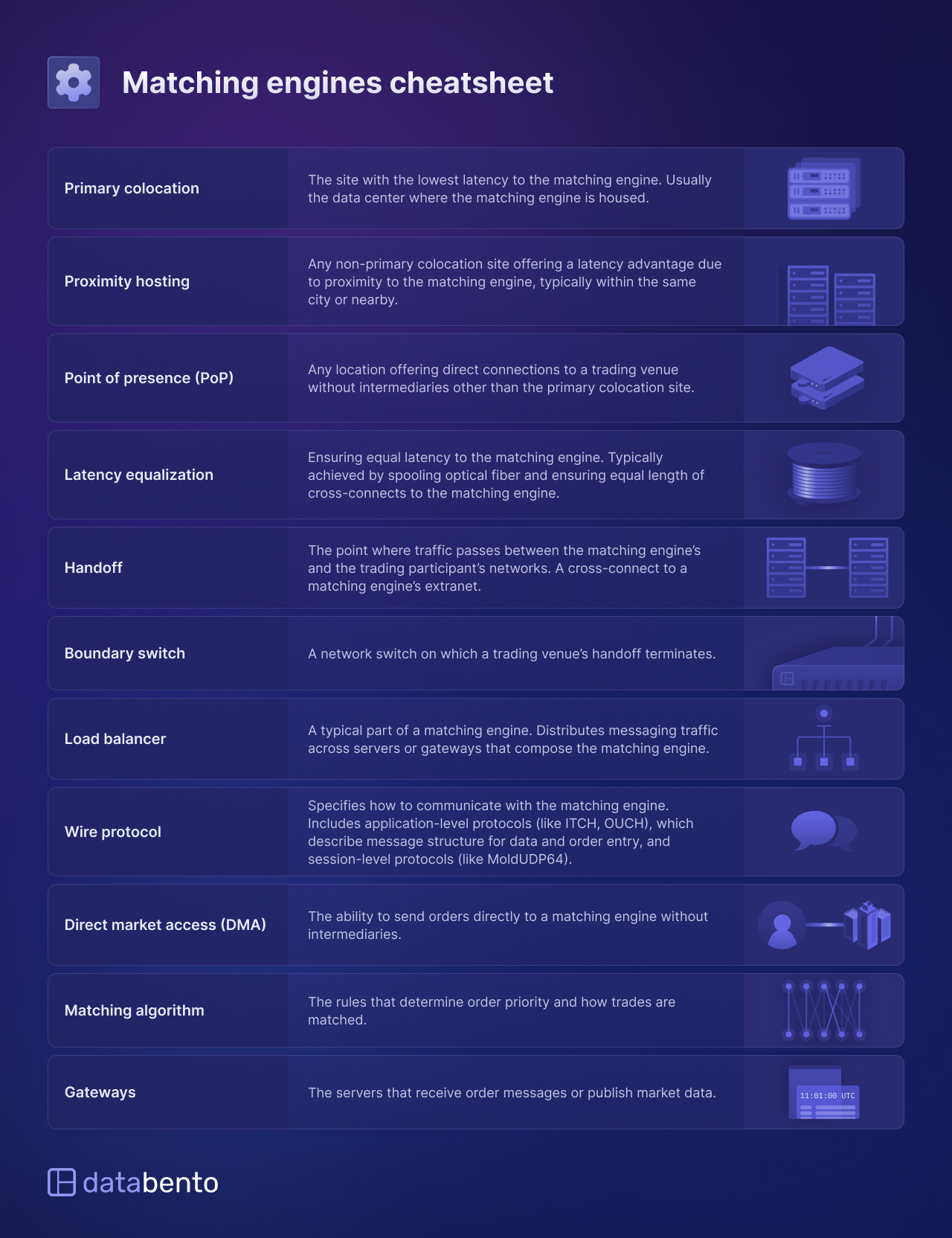Did you know that in the world of high-frequency trading (HFT), a delay of just a millisecond can mean the difference between profit and loss? This article dives into the critical role of latency in HFT, exploring its definition, effects on performance, and the primary causes behind it. We’ll also address how traders can measure latency and the impact of network speed on trade execution. Discover strategies to minimize latency, the influence of trading venues, and the technologies that can help optimize performance. Furthermore, we’ll examine the legal implications and the relationship between latency and profitability, all while highlighting how DayTradingBusiness can guide you through these complexities for better trading outcomes.
What is latency in high-frequency trading (HFT)?
Latency in high-frequency trading (HFT) refers to the delay between a trader’s action and the execution of that trade. It significantly impacts performance, as even microseconds can determine whether a trade is profitable. Lower latency allows traders to react faster to market changes, gaining a competitive edge. High latency can result in missed opportunities or unfavorable pricing, ultimately affecting profitability and execution quality.
How does latency affect HFT performance?
Latency significantly impacts high-frequency trading (HFT) performance by affecting the speed at which trades are executed. Lower latency allows traders to react faster to market changes, capturing price discrepancies before competitors. Even microseconds of delay can result in missed opportunities or less favorable prices. Strategies relying on speed, like arbitrage, suffer greatly from high latency, leading to reduced profitability. Overall, minimizing latency is crucial for maintaining a competitive edge in HFT.
What are the main causes of latency in trading systems?
The main causes of latency in trading systems include network delays, data processing speed, hardware limitations, and software inefficiencies. Network delays arise from the time it takes for data to travel between exchanges and traders. Data processing speed is affected by how quickly algorithms can analyze and act on market information. Hardware limitations involve the performance of servers and infrastructure. Software inefficiencies can stem from poorly optimized code or excessive data handling. All these factors can significantly impact high-frequency trading (HFT) performance.
How can traders measure latency in HFT?
Traders can measure latency in high-frequency trading (HFT) by using tools like network analyzers, ping tests, and specialized software that monitors execution times. They often look at round-trip time (RTT) for order placement and execution, as well as the time taken for market data to reach their systems. Additionally, comparing timestamps from order entries and fills can provide insights into latency issues. Monitoring these metrics helps traders optimize their strategies and improve performance.
What role does network latency play in HFT?
Network latency is crucial in high-frequency trading (HFT) because it directly affects the speed of data transmission and order execution. Lower latency allows traders to react faster to market changes, gaining a competitive edge. Delays can lead to missed opportunities or unfavorable trade prices, as HFT strategies rely on executing trades within milliseconds. Thus, minimizing latency is essential for maximizing profitability and maintaining an advantage in the fast-paced trading environment.
How do latency issues impact trade execution?
Latency issues can significantly affect trade execution in high-frequency trading (HFT). Delays in data transmission lead to slower decision-making, resulting in missed opportunities or less optimal trade prices. In a competitive market, even milliseconds can mean the difference between profit and loss. High latency can cause outdated market information, impacting order accuracy and execution speed. This can lead to increased slippage, where the execution price deviates from the expected price, ultimately harming profitability. Reducing latency is crucial for HFT firms to maintain a competitive edge and ensure efficient trade execution.
What strategies can reduce latency in HFT?
To reduce latency in high-frequency trading (HFT), implement these strategies:
1. Optimize Algorithm Efficiency: Streamline trading algorithms to minimize processing time.
2. Colocation: Place servers close to exchange data centers to shorten the distance signals travel.
3. Use Faster Hardware: Invest in high-performance servers, FPGAs, and low-latency networking equipment.
4. Minimize Data Processing: Reduce the volume of data processed and focus on essential signals.
5. Streamline Connectivity: Use direct market access (DMA) and prioritize low-latency communication protocols.
6. Network Optimization: Implement software-defined networking and optimize routing paths.
7. Reduce Software Latency: Use efficient coding practices and minimize dependencies in trading software.
8. Regular Testing and Monitoring: Continuously test and monitor systems to identify and resolve latency issues.
These strategies collectively enhance HFT performance by minimizing delays in trade execution and data processing.
How does latency influence market making in HFT?

Latency directly impacts market making in high-frequency trading (HFT) by affecting the speed of order execution and market data processing. Lower latency allows traders to respond faster to market changes, capturing price discrepancies quickly. If latency is high, market makers may miss opportunities, leading to less competitive pricing and reduced profitability. Additionally, latency can affect risk management; delays in information can lead to inaccurate positions. Overall, minimizing latency is crucial for effective market making in HFT.
What is the relationship between latency and profitability in HFT?
In high-frequency trading (HFT), lower latency directly correlates with higher profitability. Faster execution times allow firms to capitalize on price discrepancies more quickly than competitors. This speed enables them to execute trades before market conditions change, securing better prices. Consequently, firms investing in technology to reduce latency often see increased trading volumes and improved profit margins. In essence, minimizing latency enhances the ability to exploit fleeting market opportunities, driving profitability in HFT.
How do different trading venues affect latency?

Different trading venues affect latency by varying the speed at which orders are processed and executed. High-frequency trading (HFT) relies on low-latency environments; therefore, venues with faster infrastructure and proximity to exchanges reduce delay. For example, direct market access (DMA) platforms often offer lower latency compared to traditional brokers. Additionally, latency can be impacted by factors like network congestion, data transmission speeds, and the efficiency of the venue’s technology. Choosing a trading venue with optimal latency characteristics can significantly enhance HFT performance.
What technologies help minimize latency in HFT?
Technologies that minimize latency in high-frequency trading (HFT) include:
1. Co-location Services: Placing trading servers in close proximity to exchange servers reduces transmission delays.
2. Direct Market Access (DMA): Allows traders to interact directly with market exchanges for faster order execution.
3. Low-Latency Networks: High-speed fiber optic connections and microwave transmission minimize signal travel time.
4. Optimized Algorithms: Advanced trading algorithms are designed to execute orders swiftly and efficiently.
5. FPGA and ASIC Hardware: Field-programmable gate arrays (FPGAs) and application-specific integrated circuits (ASICs) process trades with minimal latency.
6. Data Compression: Reducing the size of data packets speeds up the transmission process.
Implementing these technologies significantly enhances HFT performance by reducing latency.
How can algorithm design mitigate latency impacts?
Algorithm design can mitigate latency impacts in high-frequency trading (HFT) by optimizing code efficiency and execution speed, implementing low-latency data feeds, and using direct market access strategies. Techniques like pre-computation and batching data reduce processing time, while optimizing network protocols and minimizing round-trip times enhance speed. Additionally, colocating servers near exchanges decreases physical distance, further reducing latency. These strategies collectively improve decision-making speed and trade execution, crucial for HFT performance.
What are the legal implications of latency in HFT?

Latency in high-frequency trading (HFT) can lead to significant legal implications, primarily surrounding market manipulation and fairness. If a firm exploits latency advantages, it may face scrutiny from regulators for engaging in practices like front-running or quote stuffing. Additionally, firms must ensure compliance with best execution obligations; failing to do so can lead to penalties. Transparency is crucial, as misleading clients about latency capabilities can result in lawsuits or regulatory actions. Overall, managing latency responsibly is essential to avoid legal repercussions in HFT.
How can firms optimize their infrastructure for lower latency?
Firms can optimize their infrastructure for lower latency by implementing the following strategies:
1. Proximity Hosting: Place servers closer to exchanges to reduce the physical distance data must travel.
2. Network Optimization: Use high-speed fiber connections and minimize hops between networks to enhance data transmission speed.
3. Hardware Upgrades: Invest in low-latency hardware, such as fast CPUs, SSDs, and optimized networking equipment.
4. Efficient Algorithms: Streamline algorithms to process data faster and reduce computational delays.
5. Parallel Processing: Utilize multi-threading and parallel processing to handle multiple tasks simultaneously.
6. Data Compression: Implement efficient data compression techniques to minimize the amount of data being transmitted.
7. Monitoring Tools: Deploy real-time monitoring tools to quickly identify and resolve latency issues.
These steps can significantly improve high-frequency trading (HFT) performance by minimizing latency.
What are the consequences of high latency in trading?
High latency in trading can lead to missed opportunities, as delays prevent traders from executing orders at optimal prices. It increases the risk of slippage, causing trades to be filled at less favorable prices than intended. High latency can also impair the effectiveness of high-frequency trading (HFT) strategies, resulting in lower profitability. Additionally, it can lead to poor market data synchronization, which may cause significant losses during volatile market conditions. Overall, high latency undermines competitive advantage and can harm trading performance significantly.
How does latency affect arbitrage opportunities in HFT?
Latency directly impacts arbitrage opportunities in high-frequency trading (HFT) by influencing the speed at which trades are executed. Lower latency allows traders to capitalize on price discrepancies between markets more quickly, capturing profits before they vanish. Conversely, higher latency can result in missed opportunities or diminished profits as prices converge. In essence, faster data transmission and execution times enhance the ability to exploit arbitrage, making latency a critical factor in HFT performance.
Conclusion about The Impact of Latency on HFT Performance
In high-frequency trading, latency is a critical factor that directly influences performance, trade execution, and profitability. Understanding its causes and effects allows traders to implement strategies that mitigate latency issues, ensuring more efficient trading operations. By optimizing infrastructure and utilizing advanced technologies, firms can significantly enhance their HFT capabilities. For traders seeking in-depth insights and assistance in navigating these complexities, DayTradingBusiness offers valuable resources to stay ahead in the fast-paced world of trading.